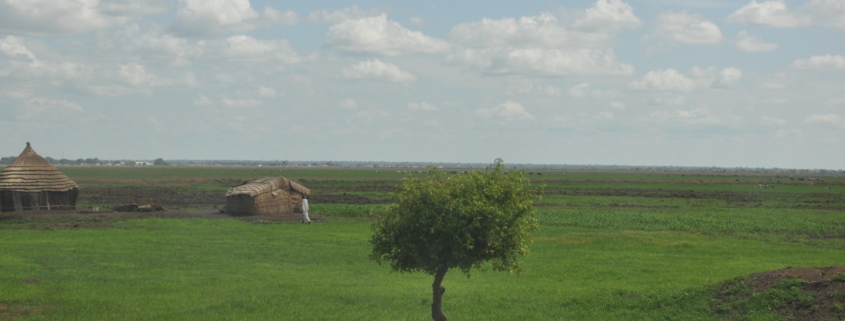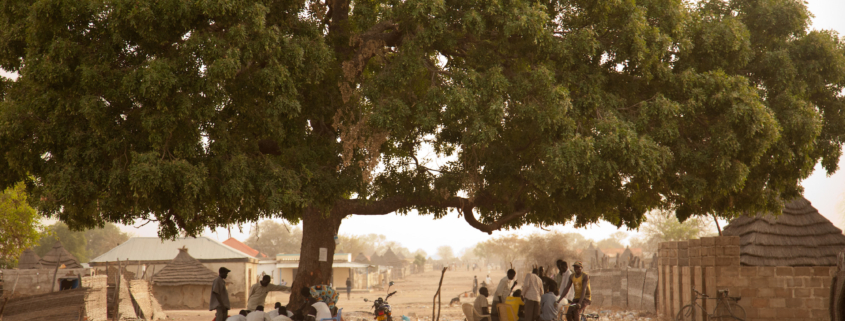The organised local and sub-national violence in Tambura County has resulted in high levels of displacement within and beyond the county since June 2021. While the conflict has been presented as ‘inter-communal’ or ‘ethnic’, it has its roots in inter-elite conflicts at the national and sub-national levels. The humanitarian response, which is urgently needed, should be conflict sensitive by considering conflict issues, primarily those related to the movement of people and its link to identity…
About CSRF
The Conflict Sensitivity Resource Facility (CSRF), initiated in 2016, supports the use of conflict sensitivity in donor strategies and programmes in South Sudan.
Entries by CSRF
There is still much to be understood about South Sudan’s dynamic context. However, there is a wealth of existing research, knowledge, experience, and ongoing discussions around localisation in South Sudan. It is critical that the aid sector continues to prioritise spaces for deep reflection and open dialogue around what ‘localisation’ means in South Sudan, the obstacles, and opportunities it presents, and how to translate localisation commitments into good practice. While localisation does not automatically lead…
This paper provides an overview of land governance as it relates to problems of conflict and displacement in South Sudan. The goal is to help aid actors better understand the context in which they are operating and how they might limit the potential for unintended consequences from their interventions and maximise the contribution that they make to social cohesion and conflict transformation. The study focused on three subnational locations – Bor, Wau and Yambio –…
Resilience has been a commonly used concept among development, humanitarian, and peacebuilding actors in South Sudan for some years and putting it into practice has become increasingly relevant in the current context. There are a variety of ways in which resilience is interpreted and practiced in South Sudan. This can impact on coordination and learning efforts among donors and aid agencies, as well as dynamics within coordination fora, and conflict dynamics among South Sudanese communities….
This Context Update Factsheet aims to support a conflict-sensitive approach to decision-making by aid actors and policy makers in South Sudan through an improved understanding of South Sudan’s context, conflict dynamics and how aid actors might interact with this context. The Conflict Sensitivity Resource Facility’s analysis covers the period January-March 2021 and is based on quantitative data reported by key informants at the settlement-level collected by REACH and additional qualitative sources. All findings presented in…
As pressure to support facilitated population movements and returns increases, Leslye Rost van Tonningen, CSRF Director, assesses some of the conflict sensitivity risks and opportunities that the aid community must account for during this process. As the implementation of the peace process slowly moves forward, five out of the six Protection of Civilians[1] sites that have been in place since 2013 have now transitioned to IDP camps, managed by the government. Meanwhile, planning for…
This Conflict Sensitivity Analysis (CSA) was requested by the Inter-Cluster Coordination Group in October 2020 and examines the conflict sensitivity implications of the transition of UN Protection of Civilian sites in Bentiu, Unity State, and Malakal, Upper Nile State, from sites under the protection of United Nations Mission in South Sudan to camps for internally displaced persons (IDPs) under the jurisdiction of the Government of the Republic of South Sudan.
This Context Update Factsheet aims to support a conflict-sensitive approach to decision-making by aid actors and policy makers in South Sudan through an improved understanding of South Sudan’s context, conflict dynamics and how aid actors might interact with this context. The Conflict Sensitivity Resource Facility’s analysis covers the period October-December 2020 and is based on quantitative data reported by key informants at the settlement-level collected by REACH and additional qualitative sources. All findings presented in…
This Context Update Factsheet aims to support a conflict-sensitive approach to decision-making by aid actors and policy makers in South Sudan through an improved understanding of South Sudan’s context, conflict dynamics and how aid actors could interact with this context. The Conflict Sensitivity Resource Facility’s analysis covers the period July-September 2020 and is based on quantitative data reported by key informants at the settlement-level collected by REACH and additional qualitative sources. All findings presented in…
It’s been nine months since the first COVID-19 case was documented in South Sudan in April 2020 and aid agencies have had to work alongside communities across the county with varying and shifting perspectives since in responding to the pandemic. This blog, written by CSRF Project Officer Lona Morgan, explores the changing perceptions of COVID-19 amongst South Sudanese communities starting from the period when news of COVID-19 first emerged in the country (March 2020), three…
Some Infos
Lorem ipsum dolor sit amet, consectetuer adipiscing elit. Aenean commodo ligula eget dolor.
Pages
- About Our County Profiles
- Blog
- Case Studies Grid
- Central Equatoria
- Conflict Sensitivity Resource Facility South Sudan
- Contact Us
- Contribute a Repository Article
- County Profile HTML links
- County Profiles
- COVID-19 HUB
- Covid-19 information page
- CSRF About Us
- CSRF Helpdesk
- CSRF Helpdesk Form
- CSRF Login
- Dashboard
- Deliverables
- Demo
- Events
- Forgot password
- Guides, Tools and Checklists
- Helpdesk
- Home
- Latest
- Looker Studio
- Subscribe


